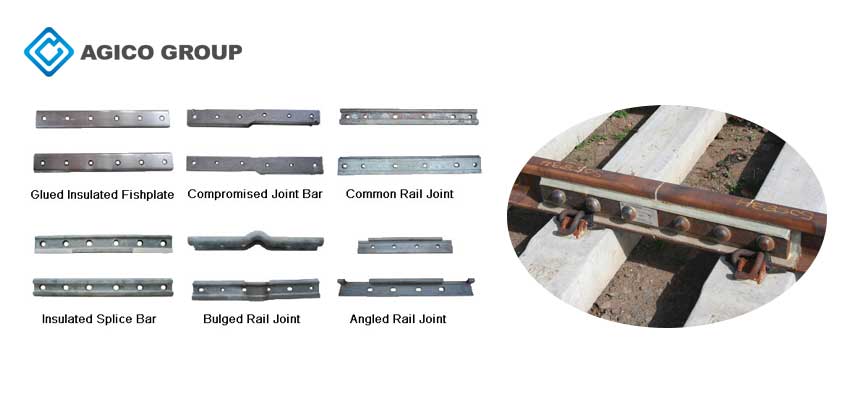
AGICO’s railway fish plates, also called rail joints or joint bars, offer a different function to other rail components. Rail joints are flat metal plates usually used to connect adjacent two rails with a number of rail bolts or railroad spikes.
Traditionally, railway fish plates are drilled with some holes on the ends of the sections to be connected. There are some holes in the end of railway track, which are used lined up with the holes in the railway fish plate and jointed using a rail bolt. In general, railway fish plates are made of steel, but plastics and composites are alternative raw materials for rail joints.
Typical railway fish plate types
According to different applications, rail joints can be classified into many types. Typical rail joint types include ordinary rail joints, insulated rail joints, non-standard rail joints and compromise rail joints.
Ordinary rail joint
Ordinary rail fish plates are made of the general material Q235 steel, and can be used in various types of rail tracks. The appearance and weight of ordinary rail joints change based on the weight of railway tracks. Main types of ordinary railway fish plate include 4hole and 6hole variants.
Insulated rail joint
The raw material and production process of insulated rail joints is decided by the process standard of insulating material. Insulated rail joints are the same size as ordinary rail joints, and are generally applied at railway sections near power plants. Insulated rail joint can effectively prevent the occurrence of electrical leakage accidents.
Non-standard rail joint
Non-standard rail joints have various types depending on the section and speed of different railways. Normally, non-standard rail joints have three types with differing weights, pitches and appearances.
Compromise rail joint
Compromise rail joint are different to non-standard rail joints, and include bulge railway fishplate and railway switch expansion joints. Compromise rail joints can be customised and used in switch expansion joints or railway sections with special designs and requirements. Compared to other types of rail joint, compromise rail joint are difficult to process.
Installation of railway fish plates
Railway fish plate installation procedures can be summarised in four steps:
- Before installing railway fish plate, power is cut off
- Each connection joint is fitted with two rail bolts
- Spring and flat washers are installed before the fish bolt (washer openings face downwards)
- Railway fish plate, railway track and fish bolts should be oiled
Maintenance of railway fish plates
Railway fish plate is a rail component that is widely applied in railway tracks. Vehicle can produce huge impulse and friction force when the train runs at high speed. Safe railway transportation requires high-quality, regularly maintained railway fish plates.
- Firstly, adopting supporting fish bolts can increase the performance of railway fish plates
- Secondly, connection rod cap can be fastened by twisting wrench strongly
- Thirdly, it is responsible to perform second-class maintenance after 1,200km of operation. Engine oil pans should be removed during the maintenance off railway fish plates. Engine bearings should be changed it the gap is too large. At the same time, the fish bolt’s connecting rod should be changed too
- Finally, during daily operation, unstable operation or abnormal noise should be noted
